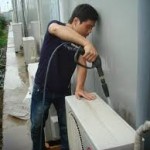For many American university students, the weeklong spring break holiday
For many American university students, the weeklong spring break holiday
For many American university students, the weeklong spring break holiday is an eagerly anticipated time of the year. It typically occurs in March or April and offers students a welcome break from their studies. Here are some key points about spring break in the United States:
- Time of Year: Spring break typically takes place in March or April, depending on the academic calendar of each university. The exact timing may vary from one institution to another.
- Traditions: Spring break is often associated with travel and relaxation. Many students use this time to go on vacations, whether it’s to tropical destinations like Florida, Mexico, or the Caribbean, or other popular spots. It’s a time for fun, parties, and outdoor activities.
- Destinations: Some destinations are particularly popular among spring breakers due to their warm weather, beaches, and vibrant nightlife. Cities like Miami Beach, Cancún (Mexico), South Padre Island (Texas), and Panama City Beach (Florida) are known for attracting large crowds during spring break.
- Cultural Exchange: Spring break can also be an opportunity for cultural exchange and service trips. Some students choose to participate in volunteer programs, where they can make a positive impact on communities in need.
- Safety Concerns: While spring break is a time for enjoyment, it’s also important to be mindful of safety. Authorities and universities often provide guidelines and tips to ensure that students stay safe while traveling and partying.
- Academic Considerations: Some universities use the spring break period for academic enrichment programs or alternative learning experiences. It’s not uncommon for students to engage in research projects, internships, or study abroad programs during this time.
- COVID-19 Impact: In recent years, the COVID-19 pandemic has had a significant impact on spring break plans. Travel restrictions and health concerns have led to changes in how students approach this holiday, with more emphasis on safety and responsible travel.
- Rejuvenation and Relaxation: Spring break serves as a mid-semester break, allowing students to recharge and return to their studies with renewed energy.
Overall, spring break is a cherished tradition for many American college students, offering a mix of relaxation, adventure, and memorable experiences. While the way students observe spring break may vary, it remains a time for creating lasting memories and taking a break from the rigors of academic life.

For many American university students, the weeklong spring break holiday
Câu 1: Read the passage and answer the questions
For many American university students, the weeklong spring break holiday means an endless party on a sunny beach in Florida or Mexico. In Panama City Beach, Florida, a city with a permanent population of around 36,000, more than half a million university students arrive during the month of March to play and party, making it the number one spring break destination in the United States .
A weeklong drinking binge is not for anyone, however, and a growing number of American university students have found a way to make spring break matter. For them, joining or leading a group of volunteers to travel locally or internationally and work to alleviate problems such as poverty, homelessness, or environmental damage makes spring break a unique learning experience that university students can feel good about .
During one spring break week, students at James Madison University in Virginia participated in 15 “ alternative spring break ” trips to nearby states, three others to more distant parts of the United States, and five international trips. One group of JMU students traveled to Bogalusa, Louisiana, to help rebuild homes damaged by Hurricane Katrina. Another group traveled to Mississippi to organize creative activities for children living in a homless shelter. One group of students did go to Florida, but not to lie on the sand. They performed exhausting physical labor such as maintaining hiking trails and destroying invasive plant species that threaten the native Florida ecosystem .
Students who participate in alternative spring break projects find them very rewarding. While most university students have to get their degrees before they can start helping people, student volunteers are able to help people now. On the other hand, the accommodations are far from glamorous. Students often sleep on the floor of a school or spend the week camping in tents. But students only pay around USD 250 for meals and transportation, which is much less than some of their peers spend to travel to more traditional spring break hotspots .
Alternative spring break trips appear to be growing in popularity at universities across the United States. Students cite a number of reason for participating. Some appreciate the opportunity to socialize and meet new friends. Others want to exercise their beliefs about people’s obligation to serve humanity and make the world a better place whatever their reason, these students have discovered something that gives them rich rewards along with a break from school work .
1. How many university students travel to Panama Beach City every March for spring break ?
A. Around 500,000
B. Around 10,000
C. Around 36,000
D. Around 50,000
2. The article is mainly about ________ .
A. sleeping on the floor or camping in tents .
B. alternative spring break trips .
C. drinking problems among university students .
D. spring break in Florida and Mexico .
3. The word “ binge ” in the second paragraph probably means ______ .
A. having very little alcohol .
B. refusing to do something .
C. studying for too long .
D. doing too much of something .
4. Which of the following is NOT mentioned as a problem that alternative spring break trips try to help solve ?
A. Alcoholism .
B. Environmental damage .
C. Poverty .
D. Homelessness .
5. Which of the following gives the main idea of the third paragraph ?
A. One group of JMU students worked on homes damaged by a hurricane .
Some students work to help the environment on alternative spring break trips .
C. Children living in homeless shelters enjoy creative activities .
D. University students do many different types of work on alternative spring break trips .
6. The article implies that university students .
A. many take fewer alternative spring break trips in future .
B. would prefer to wait until they have their degrees to start helping people .
C. complain about accommodations on alternative spring break trips
D. spend more than USD 250 for traditional spring break trips .
7. The word “ them ” in paragraph 4 refers to .
A. degreesB. projects
Xem thêm: American Airlines – Wikipedia tiếng Việt
C. people
D. students
8. Which of the following is mentioned as a reason for participating in alternative spring break trips ?
A. The hope of earning money .
B. A personal opinion that people must help other people .
C. A desire to travel to glamorous places .
D. A wish to get away from family and friends .
Lời giải :
Đáp án :
1. A 2. B 3. D 4. A 5. D 6. B 7. B 8. B Giải thích :
1. tin tức : In Panama City Beach, Florida, a city with a permanent population of around 36,000, more than half a million university students arrive during the month of March to play and party .
2 .
A. Ngủ dưới sàn hoặc cắm trại trong lều .
B. Các chuyến “ kì nghỉ xuân thay thế sửa chữa ” .
C. Các yếu tố về uống rượu giữa những sinh viên ĐH .
D. Kì nghỉ mùa xuân ở Florida và Mexico .
3. binge = doing too much of something : làm gì quá nhiều
4. tin tức : For them, joining or leading a group of volunteers to travel locally or internationally and work to alleviate problems such as poverty, homelessness, or environmental damage makes spring break a unique learning experience that university students can feel good about .
5 .
A. Một nhóm sinh viên JMU sửa chữa thay thế những ngôi nhà bị hư hại do bão .
B. Một số học viên thao tác để giúp sức thiên nhiên và môi trường trong những chuyến đi nghỉ xuân sửa chữa thay thế .
C. Trẻ em sống trong những nơi trú ẩn dành cho người vô gia cư thích những hoạt động giải trí phát minh sáng tạo .
D. Sinh viên ĐH làm nhiều loại việc làm khác nhau trong những chuyến đi nghỉ xuân thay thế sửa chữa .
6. tin tức : Students who participate in alternative spring break projects find them very rewarding. While most university students have to get their degrees before they can start helping people .
7. tin tức : Students who participate in alternative spring break projects find them very rewarding .
8. tin tức : Others want to exercise their beliefs about people’s obligation to serve humanity and make the world a better place whatever their reason, these students have discovered something that gives them rich rewards along with a break from school work .
Dịch : Đối với nhiều sinh viên ĐH Mỹ, kỳ nghỉ xuân lê dài một tuần đồng nghĩa tương quan với một bữa tiệc bất tận trên bãi biển đầy nắng ở Florida hoặc Mexico. Tại Panama City Beach, Florida, một thành phố có dân số thường trú khoảng chừng 36.000 người, hơn nửa triệu sinh viên ĐH đến trong tháng 3 để đi dạo và tiệc tùng, khiến nơi đây trở thành điểm đến số một trong kỳ nghỉ xuân ở Hoa Kỳ .
Tuy nhiên, một cuộc nhậu nhẹt lê dài cả tuần không dành cho bất kể ai, và ngày càng nhiều sinh viên ĐH Mỹ đã tìm ra cách để kỳ nghỉ xuân trở nên quan trọng. Đối với họ, việc tham gia hoặc dẫn dắt một nhóm tình nguyện viên đi du lịch trong nước hoặc quốc tế và thao tác để giảm bớt những yếu tố như nghèo nàn, vô gia cư hoặc thiệt hại về thiên nhiên và môi trường khiến kỳ nghỉ xuân trở thành một thưởng thức học tập độc lạ mà sinh viên ĐH hoàn toàn có thể cảm thấy hài lòng .
Trong một tuần nghỉ xuân, sinh viên tại Đại học James Madison ở Virginia đã tham gia 15 chuyến đi “ kỳ nghỉ xuân sửa chữa thay thế ” đến những tiểu bang lân cận, ba chuyến khác đến những vùng xa hơn của Hoa Kỳ và năm chuyến đi quốc tế. Một nhóm sinh viên JMU đã đến Bogalusa, Louisiana, để giúp thiết kế xây dựng lại những ngôi nhà bị hư hại bởi cơn bão Katrina. Một nhóm khác đến Mississippi để tổ chức triển khai những hoạt động giải trí phát minh sáng tạo cho trẻ nhỏ sống trong khu tạm trú dành cho người vô gia cư. Một nhóm sinh viên đã đến Florida, nhưng không phải để nằm trên cát. Họ triển khai những việc làm lao động chân tay căng thẳng mệt mỏi như duy trì những con đường mòn đi bộ đường dài và hủy hoại những loài thực vật xâm lấn đang đe dọa hệ sinh thái địa phương của Florida .Những học sinh tham gia vào các dự án nghỉ xuân thay thế thấy chúng rất bổ ích. Trong khi hầu hết các sinh viên đại học phải lấy bằng trước khi họ có thể bắt đầu giúp đỡ mọi người, thì giờ đây các sinh viên tình nguyện đã có thể giúp đỡ mọi người. Mặt khác, chỗ ở là xa quyến rũ. Học sinh thường ngủ trên sàn của trường hoặc dành cả tuần để cắm trại trong lều. Nhưng sinh viên chỉ trả khoảng 250 đô la cho các bữa ăn và phương tiện đi lại, ít hơn nhiều so với số tiền mà một số bạn cùng trang lứa chi để đi du lịch đến các điểm nóng trong kỳ nghỉ xuân truyền thống hơn.
Xem thêm: American Airlines – Wikipedia tiếng Việt
Các chuyến đi nghỉ xuân sửa chữa thay thế có vẻ như đang ngày càng phổ cập tại những trường ĐH trên khắp Hoa Kỳ. Học sinh trích dẫn một số ít nguyên do để tham gia. Một số nhìn nhận cao thời cơ giao lưu và gặp gỡ những người bạn mới. Những người khác muốn triển khai niềm tin của họ về nghĩa vụ và trách nhiệm của mọi người là ship hàng trái đất và làm cho quốc tế trở nên tốt đẹp hơn bất kể nguyên do của họ là gì, những sinh viên này đã tò mò ra điều gì đó mang lại cho họ những phần thưởng đa dạng chủng loại cùng với việc nghỉ học .
Source: https://suadieuhoa.edu.vn
Category : American















